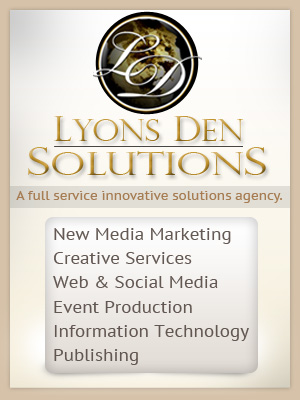-
Recent Posts
- What is the Cost of a New Customer?
- 10 Tools that Keep the Virtual Lyons Den Tame
- Anatomy of Mashable’s #MashableSummit Hashtag
- Using Social Media to Weather the Storm during Hurricane Season
- Foursquare Check-ins: The Low-Hanging Fruit
- 13 Ways to Grow Your Business on the Internet
- 5 Steps to Bring Foursquare Check-Ins to Your Door
- 5 Tips for Thriving in Social Media
- 9 Keys to Making Live Events Social Media Friendly
Categories
Interaction Coach • Social Media Strategist • Engagement Architect









What is the Cost of a New Customer?
What does it cost to get a new customer? How much does it cost to get 50 people to attend my webinar? How much do real ‘likes’ cost me on my Facebook page? I want to have 1,000 people attend my seminar, what does it cost?
It’s surprising how many business owners, CEOs, marketers, and start-up founders I talk to that do not know the cost of gaining a new customer. Customer Acquisition Cost should be the genesis of every new customer oriented marketing effort you do. Just the knowledge of the existence of Customer Acquisition Cost can start shifting marketing from risk to reward. Not knowing this cost is many times the first dominio to fall in the train of marketing failure and cash burn.
So what is Customer Acquisition Cost?
Customer Acquisition Cost (CAC) is simply what it costs to get a new customer.
Here’s how I explain it:
How to determine your Customer Acquisition Cost?
CAC is the total marketing expenses divided by the total number of customers acquired. So if you spent $1,000 to acquire 100 new customers your CAC would be $10. Once you know this cost it becomes the standard of success or failure for every future new customer marketing effort. As a marketer my primary usage of CAC is to leverage the outcomes of marketing campaigns. For small and medium sized businesses I track three types of CAC:
The Historical CAC is the golden rule that business strategy, profitability, scalability analysis, and new marketing efforts should be tied to. CAC by Campaign Type allows business decisions to be made on the effectiveness of different media types and helps in determining budget allocation to the respective mediums. The CAC by Campaign is the steering wheel and throttle on individual efforts and can be used in marketing testing matrixes. Please understand that Customer Acquisition Cost does not replace other metrics like cost per click (CPC), click-through rates (CTR), open rates, bounce rates, conversion rates, and other levers that drive the cost, velocity, and response of campaigns. Customer Acquisition Cost is the business benchmark of success for all new customer marketing efforts and is effectively used in determining growth trajectory, acceptable risk patters, and new business development concepts.
The Ugly Revealed?
Oh snap! You started analyzing a recent campaign and just realized that it cost you $50 to meet Angela and she purchased one $50 designer widget which you only make $25 of profit on. Simmer down, you may not have lost $25. There is a saving grace for out-of-balance Customer Acquisition Cost. Thank goodness for the Lifetime Value of a Customer.
Remember, you are the amazing business owner who tracks the source of each new customer, sends them referral invitation offers in your email newsletters, sends out thank you notes for new customers with coupons included, right? Let’s stalk Angela a little in this timeline to see a possible outcome:
Whew, you didn’t loose a dime. You did gain a new customer, produced $110 of cash flow, and moved 3 inventory items. But wait… there’s more:
Did you also notice that Jennifer was a referred customer that you didn’t have to spend marketing dollars to acquire? Angela cost you $50 to acquire but if Jennifer and Angela were your only two customers your Customer Acquisition Cost would be $25 per customer. That is Lifetime Value of a Customer and the Power of Referrals working together to save your butt on an out of balance Customer Acquisition Cost.
I hope this post helps you on your way to predicting cost and outcomes of your new customer marketing efforts while protecting your risk. If this blog post was a complete waste of your time I have a free gift for you: Please enjoy this adorable kitten video.